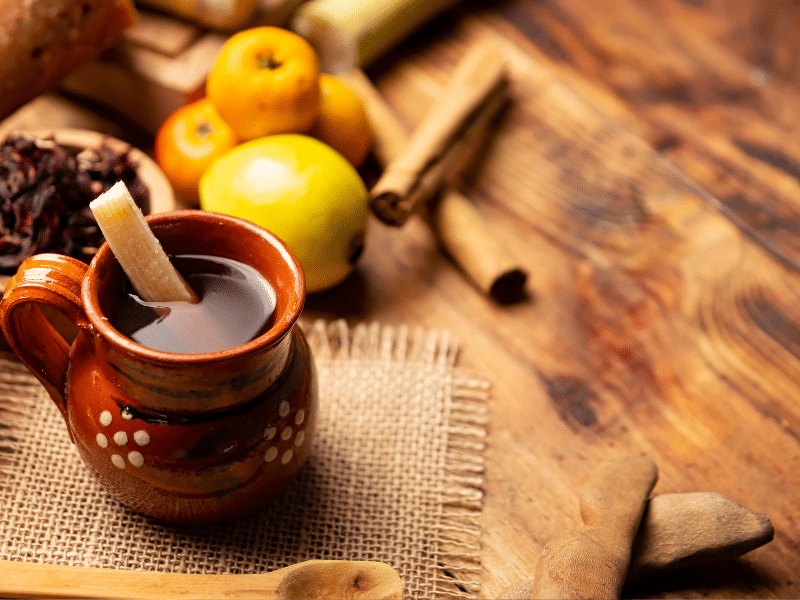 When my husband and I first got pregnant, I remember telling him enthusiastically about the traditions my family had during the holidays. As a person of Mexican descent who spent most of her life either in Mexico or in a town that borders Mexico, it never really occurred to me that some of the traditions I experienced differed from others. Granted, I knew of other religions that celebrated different holidays, such as Hanukkah or Kwanza. Still, I figured those who celebrated Christmas would do similar things that my family did growing up.
When my husband and I first got pregnant, I remember telling him enthusiastically about the traditions my family had during the holidays. As a person of Mexican descent who spent most of her life either in Mexico or in a town that borders Mexico, it never really occurred to me that some of the traditions I experienced differed from others. Granted, I knew of other religions that celebrated different holidays, such as Hanukkah or Kwanza. Still, I figured those who celebrated Christmas would do similar things that my family did growing up.
Looking at the expression on my husband’s face when I told him I couldn’t wait to stay up till midnight on Christmas Eve eating vast amounts of food, sipping on coffee, and watching our kids tear through gifts from family, I realized that I was wrong. My husband grew up in Pennsylvania from a family of Slovic and German descent. I’d hazard to say that his Christmas traditions and experiences are more in line with what the majority of the US does. Like a Hallmark Christmas movie kind of Christmas where folks don’t stay up until midnight to open gifts; instead, Christmas day is for gathering and gift opening.
It wasn’t until this realization that I started delving into the traditions that we did in my family. That’s when I discovered Nochebuena. My family and I did this every year for as far back as I could remember, which makes so much sense as it is one of the most important and festive holidays in the Latin world.
In many Western cultures, Christmas Day is the focal point of the celebration and traditions, but in many Latin cultures, Nochebuena is the biggest celebration of the holiday season. Nochebuena, which translates to ‘Good Night,’ is the celebration we held on Christmas Eve, the night of December 24th. It is a night that encapsulates warmth, love, and unity.
At its core, Nochebuena is a celebration of family. Whether celebrating with my family in the US or Mexico, I knew I could expect five things at both gatherings. There would be family, music, an abundance of laughter, food, and presents.
If we were in the US, we’d gather with my mom’s side of the family. The gathering would generally cap out at 20 people, and I could expect an evening of lounging at my aunt’s house with cousins I grew up with and spent most of my childhood with. We’d maybe get a surprise visit from Santa Claus, and my cousins and I would do our best to stay awake until midnight to furiously unbox the gifts that the adults had carefully chosen for us. We’d then gather for about an hour or so more, playing with our new toys, thanking those who made our evening, and sneaking a few more desserts while our parents spent 20 or so minutes saying goodbye to one another. Then we’d pile into our cars, drive home, and head straight to bed, knowing that in the morning, our Christmas tree would have been visited by Santa. We’d furiously open gifts again and then spend the rest of the day lounging at home, enjoying our new items, eating a massive amount of leftovers, and never changing out of our PJs.
If we were spending the holiday with my family in Mexico, the evenings would be much different. There was still going to be that emphasis on food and togetherness. There’d still be a lot of laughter and family, but the gathering would go from about 20 to over 45, depending on which of my father’s nine siblings would be attending and whether or not their children and their children’s children would also be present.
There would be so much more emphasis on praying and doing more traditional activities such as los posadas or attending Misa del Gallo. Los Posadas generally consist of following a procession, generally attended by musicians, visiting select homes, singing carols, and reciting scripture. As we would arrive at the preselected homes, we would then ask the host for shelter, essentially recreating the evening when Mary and Joseph sought shelter for the birth of Jesus. To continue recreating Mary and Joseph’s struggle, the first few homes we visited would deny us shelter. However, they generally provided refreshments as the procession moved on until we arrived at the home where our festivities were planned. This host would graciously shelter us, and we’d enter the home removing jackets and scarves. Warming our hands with hot chocolate and delving into sweet treats.
We’d stay at this home until it was time for Misa del Gallo or ‘Rooster’s Mass,’ a midnight mass that marks the birth of Jesus Christ and is another tradition that is celebrated by many Latin cultures. After this mass, we would head back to the host’s home to continue our celebration, and this would generally be when children could expect to open gifts given to them by family members. We could expect to see friends of the family also stopping by with their families to wish us well, share their food with us, and leave with helpings of our own dishes.
Whether in Mexico or the US, I knew I could expect one of my absolute favorite dishes to be served: tamales. These warm and delicious pockets of corn dough filled with meats, cheese, and/or beans would be made by the dozens in the days before Nochebuena. It is always such an amazing time to behold as families gather to steam corn leaves, mix together the dough, cook the fillings, spread the dough onto the now supple corn leaves, place the filling on top of the dough, and expertly roll up the tamale. Vigilant grandmothers would be given final taste of all ingredients to ensure they met their exacting standards. If an ingredient was missing, they’d ensure the proper amount was added and give another taste before approving the ingredient to go onto the assembly line. Tamales were then cooked by being steamed in massive tamaleras that have been passed down for generations. These huge steamer pots would see a variety of tamales cooked made up of different flavors like chicken and cilantro (my personal favorite before I became vegan), pork, bean and cheese. Salsa was also incorporated to either enhance the filling’s smokey flavor or to cause the eater to gulp down some much-needed ponche (a warm fruit punch). If I close my eyes, I can still recall the mouthwatering smells and hear the laughter that echoed throughout the home as we worked together as a family to prepare this delicious meal.
In addition to tamales and ponche were other items such as grilled meats, appetizers made up of fruits, vegetables, cream cheese, crackers, and seafood. There would be a plethora of desserts and side dishes that helped keep our stamina up during the masses or posadas, ensuring there’d be enough food for the next day when we’d awake bleary-eyed and excited.
While I’m sad to say that my daughters have not truly experienced Nochebuena in the way that I did growing up, I work hard to ensure they understand the different traditions their heritage holds. If you ever have the opportunity to experience Christmas Eve and Christmas Day in a Latin household, I encourage you to accept the invitation. The warmth and joy that you’ll be enveloped in is enough to help carry you through the remaining winter time. I can also say with certainty that you’ll leave with a content stomach and a full heart.
Have you experienced Nochebuena? What was your favorite part? If you haven’t experienced Nochebuna, how do you feel your traditions differ?








